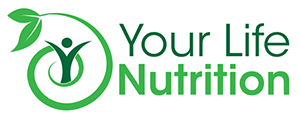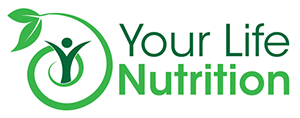Take a deep breath in and slowly exhale. Did you feel your lungs expand as you sucked in the surrounding air and slowly pull back in as you blew out? Breathing is a pretty cool thing when you think about it. You see, when we breathe in, we are pulling in oxygen from the atmosphere and when we breathe out, we are ridding our bodies of carbon dioxide and other waste products which are toxic in large amounts. So why do we need oxygen in the first place and how does it get from our lungs to other body organs throughout the body? Well, that is where the mineral iron shines alongside some of its other very important body functions which we are going to discuss further.1
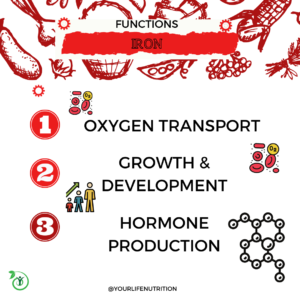
We need oxygen to live and make energy in every part of our bodies.2 From digesting food to muscle movement to thinking, oxygen is necessary for it all.2 So, the body brings in oxygen from the air through our lungs, into the capillaries where it attaches to hemoglobin (a special little protein found in red blood cells), up through the left side of the heart where it gets pumped into the arteries to be delivered to every single organ, tissue, and cell in our body.1 Once these areas have the fuel they need from oxygen, they start their work and in the process release carbon dioxide which, as mentioned above, is not happy in the body.2 So, carbon dioxide moves back up through the veins, back to the right side of the heart, and exhales it back out through the lungs.2
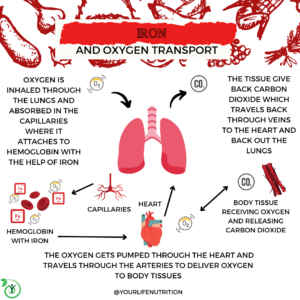
Now, I know what you may be thinking. What does breathing and oxygen have to do with iron? I’m glad you asked. Remember that protein in the red blood cells mentioned earlier, the hemoglobin? Well, iron is a very important component of this protein, without iron, the hemoglobin wouldn’t be able to carry any of the oxygen to the tissues.1 Imagine inviting over a bunch of friends to take a trip to the movies. Everyone arrives at your home when you realize there are not enough seats in your car to get them all to the theater. When this happens in our bodies, there is not enough iron to transport the oxygen to the tissues and we experience fatigue and after a prolonged time, may develop iron-deficiency anemia.1 Some other important roles of iron include healthy brain development, growth in children, and producing various hormones.1
We can get iron from the diet in two different forms, heme (the animal source) which is better absorbed and non-heme (the plant source and animal source indirectly from the foods they eat).1 When iron is stored in the body, it is in the form of ferritin and transported through the blood attached to transferrin.1 Women 19-50 years old are recommended to get 18 mg per day and men 19-50 years old are recommended to get 8 mg per day.1
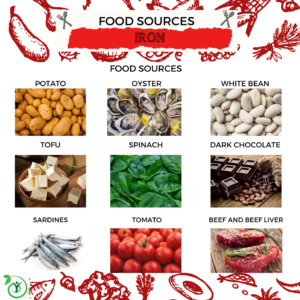
Here is a list of some heme and non-heme iron sources:
- Oysters = 8 mg per 3 oz
- White Beans = 8 mg per cup
- Dark Chocolate = 7 mg per 3 oz (45-69% cacao solids)
- Beef Liver = 5 mg per 3 oz.
- Lentils = 3 mg per ½ cup
- Spinach = 3 mg per ½ cup
- Tofu = 3 mg per ½ cup
- Kidney Beans =2 mg per ½ cup
- Sardines = 2 mg per 3 oz.
- Chickpeas = 2 mg per ½ cup
- Tomatoes = 2 mg per ½ cup
- Beef = 2 mg per 3 oz.
- Potato = 2 mg per potato
- Cashews = 2 mg per 1 oz.
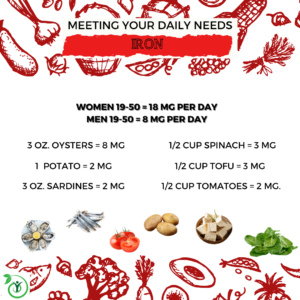
You may be wondering why the recommended daily allowance is so much higher for women than men. This is due to the excessive blood loss women experience during menstruation and recommended intake reduces back down to 8 mg per day once menopause begins.2 If you are worried about reaching your daily intake, talk to your physician about taking a supplement as there are many options and forms available with varying amounts of iron.2 Iron deficiency is not common in the United States, but it is the cause of over half of the cases of anemia so it is important to be aware of the natural food sources and your daily intake to make sure you are meeting your needs.2 So, the next time you breath in, try to think about the journey oxygen is taking thanks to the help of the powerful little mineral, iron.
References:
- Iron. The Nutrition Source. https://www.hsph.harvard.edu/nutritionsource/iron/#:~:text=Iron%20is%20an%20important%20mineral%20that%20helps%20maintain%20healthy%20blood.&text=Iron%20is%20a%20major%20component,oxygen%2C%20which%20leads%20to%20fatigue. Published October 19, 2020. Accessed February 9, 2022.
- How does oxygen get into the bloodstream? British Lung Foundation. https://www.blf.org.uk/support-for-you/how-your-lungs-work/oxygen-and-blood. Published November 23, 2021. Accessed February 9, 2022.
Post created by the University of Akron dietetic intern: Michaela Campbell
